As the stock market continues higher, you lot hear the term bull market constantly as it applies to stocks. It’s a common term, only what does it actually hateful and how can y’all merchandise it? Is a bull market only when the markets go higher on a single mean solar day and does it notwithstanding apply on very red trading days?
What is a Bull Market place?
A bull marketplace is a status defined as a market that continues to trend higher or uptrend. An uptrending market is ane that makes higher highs (extensions) and college lows (pullbacks). This uptrend pattern applies to all financial assets and instruments and tin can be applied to multiple time frames. In reference to a balderdash market, the uptrend is applied on a wider time frame that can range from days to months. Ordinarily balderdash markets are applied to benchmark indexes like the Dow Jones Industrial Average, South&P 500 index, and the Nasdaq index. It generalizes the stock market place to basically rise or falling. It’south label stems back to the notion of a balderdash’due south horns rising up as information technology charges. Whereas a bear volition claw down as information technology attacks. Go along in heed that non all sectors, industries and stocks will rise in a bull market, but most tend to follow the indexes higher.
Criteria
The criteria for a bull market place starts with a continuous uptrend in equity alphabetize prices while the economy is also exhibiting signs of growth. This ways employment levels are high as the economic system continues to strengthen as measured by gross domestic production (Gross domestic product). As with whatever strong market, demand tends to outstrip supply thereby causing prices to rise. A bull marketplace continues higher considering the demand for stock pushes prices higher as sellers raise their offers or decide to only ride the uptrend, thereby providing less supply. Investors are typically optimistic nigh the economic system, employment, financial stability and thereby have a proclivity towards calculation more upper-case letter to their investments. Every bit prices rise, they tend to continually ascent every bit participants buy the dip on pullbacks thereby generating higher lows in improver to driving college highs.
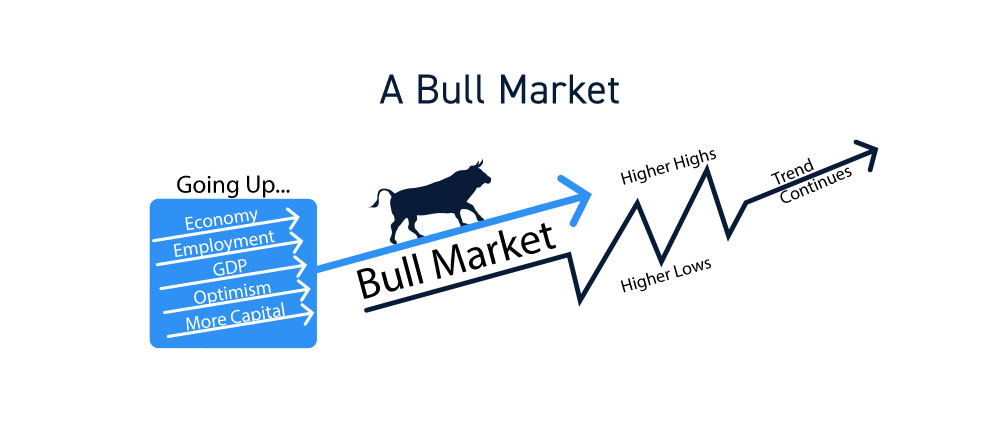
Economic Implications
The underlying economic system tends to exist improving as evidenced by expanding Gdp and falling unemployment. Wages tend to rise in a bull market place and companies standing hiring as they finance growth with depression involvement rate loans and debt. This is an expansion menstruation which also sees rising real estate prices, bolt prices, and inflation. Depression interest rates spur economic growth every bit “cheap” money enables companies to invest and reinvest in projects and expansion.
History of Balderdash Markets
There take been 14 bull markets since June 1932. The boilerplate length of a bull market is 3.eight years with the longest bull market being the 11 year run from 2009 to 2020, just before the COVID-xix pandemic collapsed the markets.

Historical examples
The largest percentage gainers for bull markets is the Oct 1990 balderdash market that generates a 417% render off the lows and the March 2009 balderdash marketplace that triggered later the fiscal markets meltdown and housing bubble. That bull market extended to March 2020 generating a 400.5% return on the Southward&P 500 earlier the pandemic blackness swan event pummeled markets. The recovering balderdash market generated a 51.5% return equally of March 23, 2021.
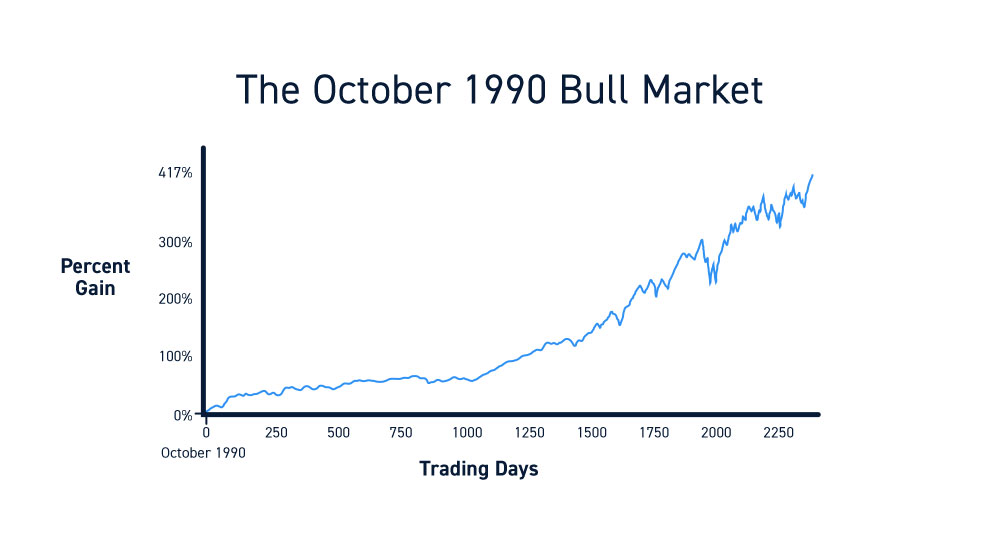
How long do balderdash markets commonly final?
Historically speaking, the boilerplate length of a bull market is ix.6 months. The average proceeds for a bull market is 112%. Keep in mind these are the average and they take been extending with each bull market place.
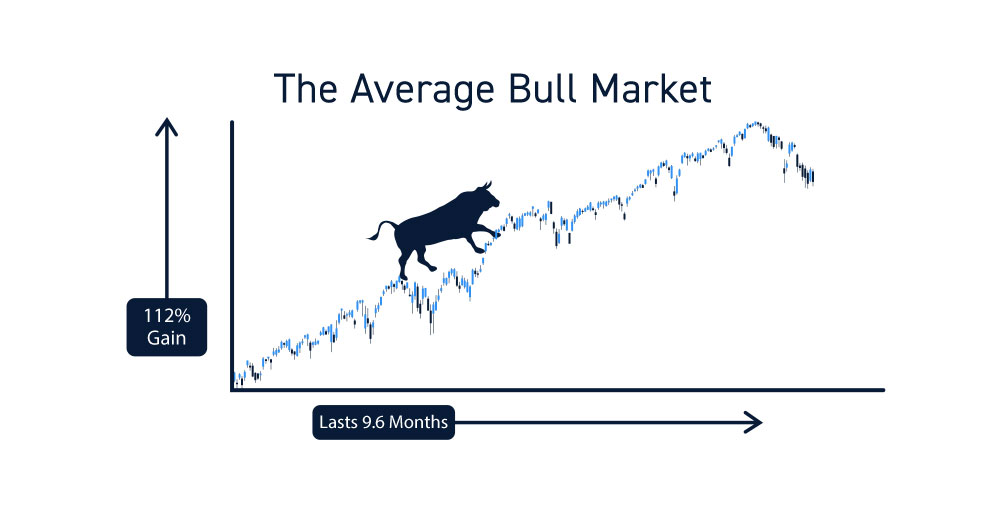
Things to Be Aware Of in Bull Markets
Corrections vs. Bear Markets vs. Crashes
A
correction
is technically considered when markets fall (-10%) from its highs for at least 60-days.
When markets fall (-20%) or more for at least 60-days, so a
carry market has arrived.
A
crash
happens when markets collapse abruptly and extremely in a minor menstruum of time. While there aren’t any specific definitions of what percentage driblet constitutes a crash, one tin can assume a (-20%) or more drop intraday on the benchmarks would be considered a crash. At that place are trading circuit breakers/trading curbs in place to soften the blow where trading is halted for periods of fourth dimension. These can likewise backfire as selling pressure level builds during the halt and is displayed when the halt is lifted.
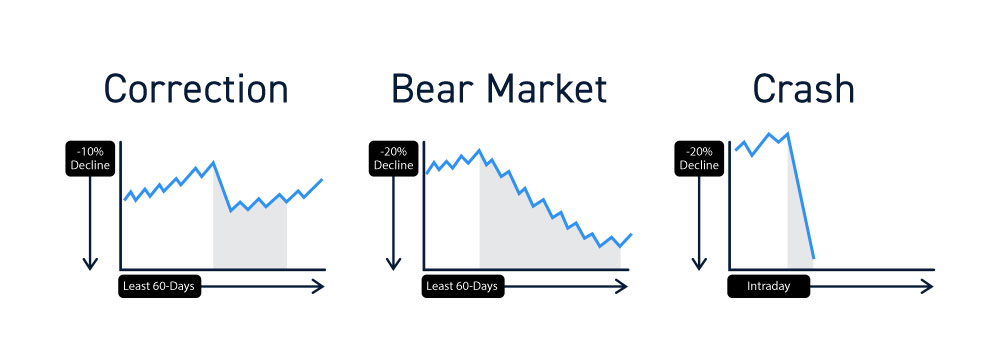
Bubbles
Balderdash markets have a habit of heating upwards too much to create a chimera. As stock markets bounce off lows and so proceed to break highs, information technology causes the fear-of-missing-out (FOMO) as traders and investors chase markets higher. The longer a balderdash market goes up, the greater the chance of a bubble. Often times, bubbles form when everything looks “great”. Valuations are expensive but the uptrend appears to want to continue college. The other gene to call up is that bubbles are simply viewable in the “rear view mirror”. In other words, bubbles aren’t identified until later on they implode. Bubbles tend to usher in carry markets as the economy and stock market place may accept overheated.
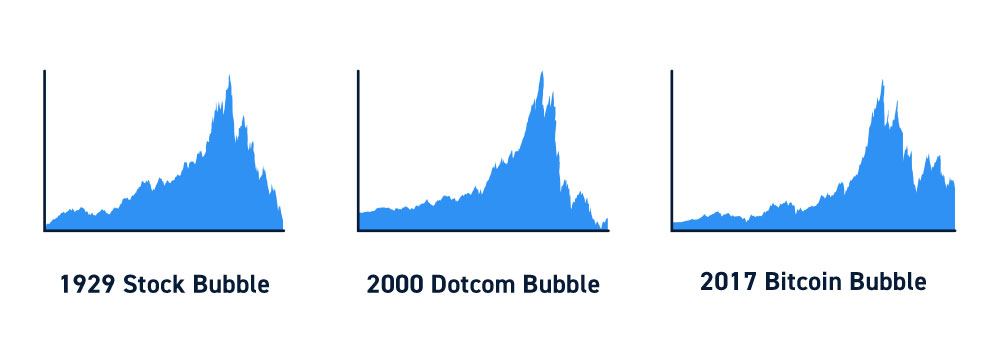
Trading in a Bull Market
Here are some tips to take into consideration when trading in a bull market. Think, active intraday traders oftentimes focus on the extreme short-term price action and often times miss the forest from the trees. It’southward important to always guess if you are trading in a bull market and adjust your strategies to accommodate conditions. Make no mistake, traders exercise lose coin in bull markets so it’southward prudent to take these tips into consideration.
Momentum Favors the Upside
In bull markets, a rising tide which lifts all boats tends to apply. While not all stocks will rise every day, the full general direction tends to be up. Money rotates constantly and certain sectors volition ascension more than others, but eventually all sectors tend to ascension in the context of a balderdash market. Buy the dip tends to be a popular trading strategy in a balderdash market since stocks eventually rise during the positive sentiment.
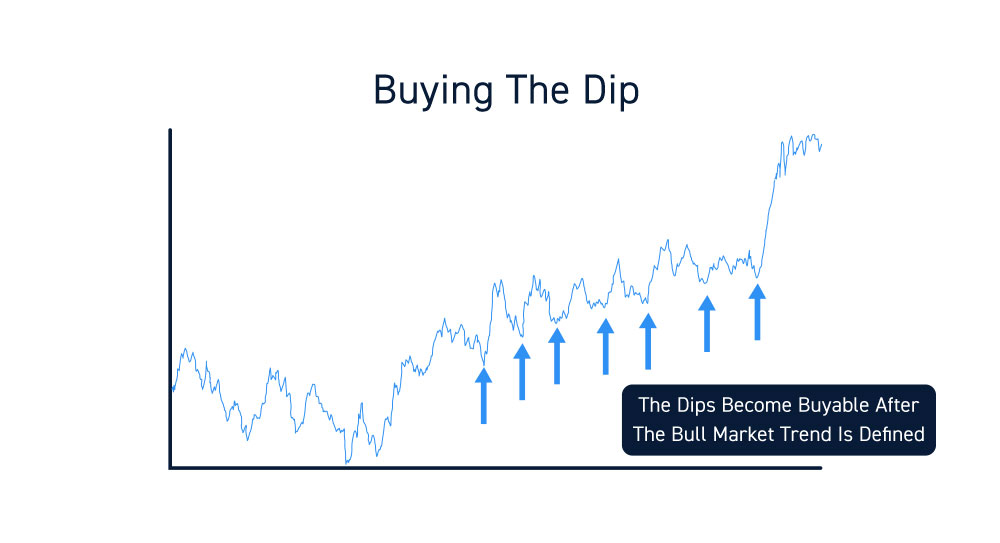
Sentiment is Overwhelmingly Positive
(Greed vs. Fright)
With such positive general sentiment, it’s easy to get greedy. In fact, greed tends to override fear unless in cases of fear-of-missing-out (FOMO). This tends to happen when retail investors go on to see the markets or specific stocks rise 24-hour interval in and day out and end of chasing stocks. This happens everyday in the markets as traders tend to chase tops more often in bull markets.
The Majority of Stocks Follow the Market place
Once more, a rise tide (tends to) lift all boats. Most major stocks follow the indexes and tend to move college with the benchmarks. Some small-cap stocks tend to be less correlated with larger benchmark indexes just may follow the small-cap benchmark indexes like the Russell 3000. Some stocks (i.e. modest caps) may not exist correlated with wide market place trends and then make sure that y’all are using the particular benchmark as a compass when trading them. The stock marketplace has been unremarkably trading with divergence at them between the SPY, QQQ and DIA benchmarks. Therefore, make sure whatever stocks you are trading is correlated with the correct benchmark. Usually banks and financials motion all-time with the SPY and DIA, while engineering stocks tend to move with the QQQ.
Stocks May Take More “Staying Power”
Balderdash markets tend to take longer periods of uptrends which tends to throw off short-sellers, who in turn stop up covering by buying back shares further driving prices higher. Uptrends tend to terminal longer and get overextended merely continue to rise. Be careful holding onto shorts too long in a bull market. It all stems dorsum to the time frames you are playing and the general context of the wider trends.
The Market May Concenter More Amateur Retail Traders
The latest balderdash market has seen a resurgence in twenty-four hour period trading with new participants entering the markets thanks to naught-committee apps and the pandemic. Seasoned day traders welcome the new amateur retail traders as they tin provide more momentum (from chasing) and liquidity as participants increment. If you happen to exist a beginner, and so brand certain that you have a trading methodology in place.
You Can Still Play Both Sides of the Marketplace
This is very important for intraday traders. Focus on your specific time frame in which you’re trading. A stock may have a strong daily uptrend, but in the process have a strong pullback intraday. In this state of affairs, you would probable consider either buying the dip nigh back up levels or short selling the reversion down. Just because yous are in a wider time frame bull market, doesn’t hateful you always have to play on the long side only. Bull markets tend to reward buying the dip, as long as you know where supports are. Shorting the “rip” is likewise a popular method of trading involving short-selling extreme overbought spikes to scalp the reversion.
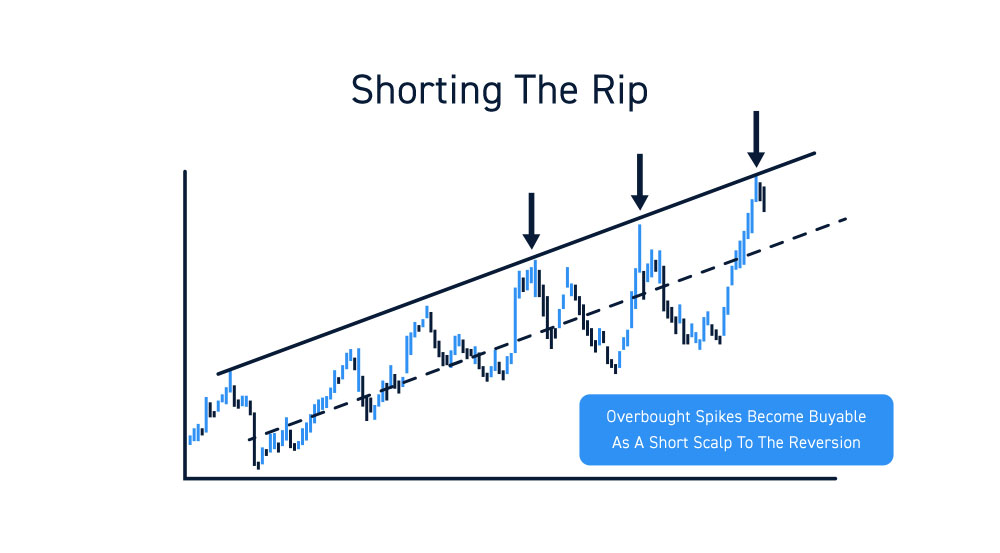
Pay Attention to Trends
On any given day in a balderdash market place, sure sectors will tend to outperform the rest of the market. Be enlightened of the 14 unlike sectors in the S&P 500 index. If you specialize in just one or a few sectors, make sure you are aware of the leaders in the sector to play the correlation (or divergence).

Be Aware of the Market place Leaders
Each sector has leaders that tend to move beginning and set the tone while the smaller peers tend to follow. Again, be enlightened of the 14 sectors and the leaders in each sector. These can too exist tracked with exchange-traded-funds (ETFs) and/or a heatmap. Generally, the leaders are the ones that carry the rest of the market or the benchmark indexes, then it pays to exist aware of them.
Focus on multiple sectors and indices
As pointed out, some sectors will be strong while others are weak on any given marketplace trading day. Utilize a heatmap and have the ETFs to gauge which sectors are stiff, and which are weak. Y’all don’t have to trade the leaders, but rather apply them as a leader indicator to trade the lower tier peer stocks. If the momentum is strong enough in a sector, the money will naturally flow down to the lower tier peer stocks and vice versa.
Be on the Look Out for a Change in Sentiment
Be aware of the technical cost levels that tin trigger a correction or a bear market. Prices move on narratives, which influence sentiment which so moves prices. Still, cost moves that are extreme tin can impact sentiment and change the narrative. E’er go on your hand on the pulse on the market and keep your ears to the basis. This can be observed by watching the leaders in the sectors as well equally knowing the technical support and resistance levels that can decide a market reversal to a bear market place.
Source: https://centerpointsecurities.com/bull-markets/
 RosyandBo.com Trusted Information and Education News Media
RosyandBo.com Trusted Information and Education News Media



